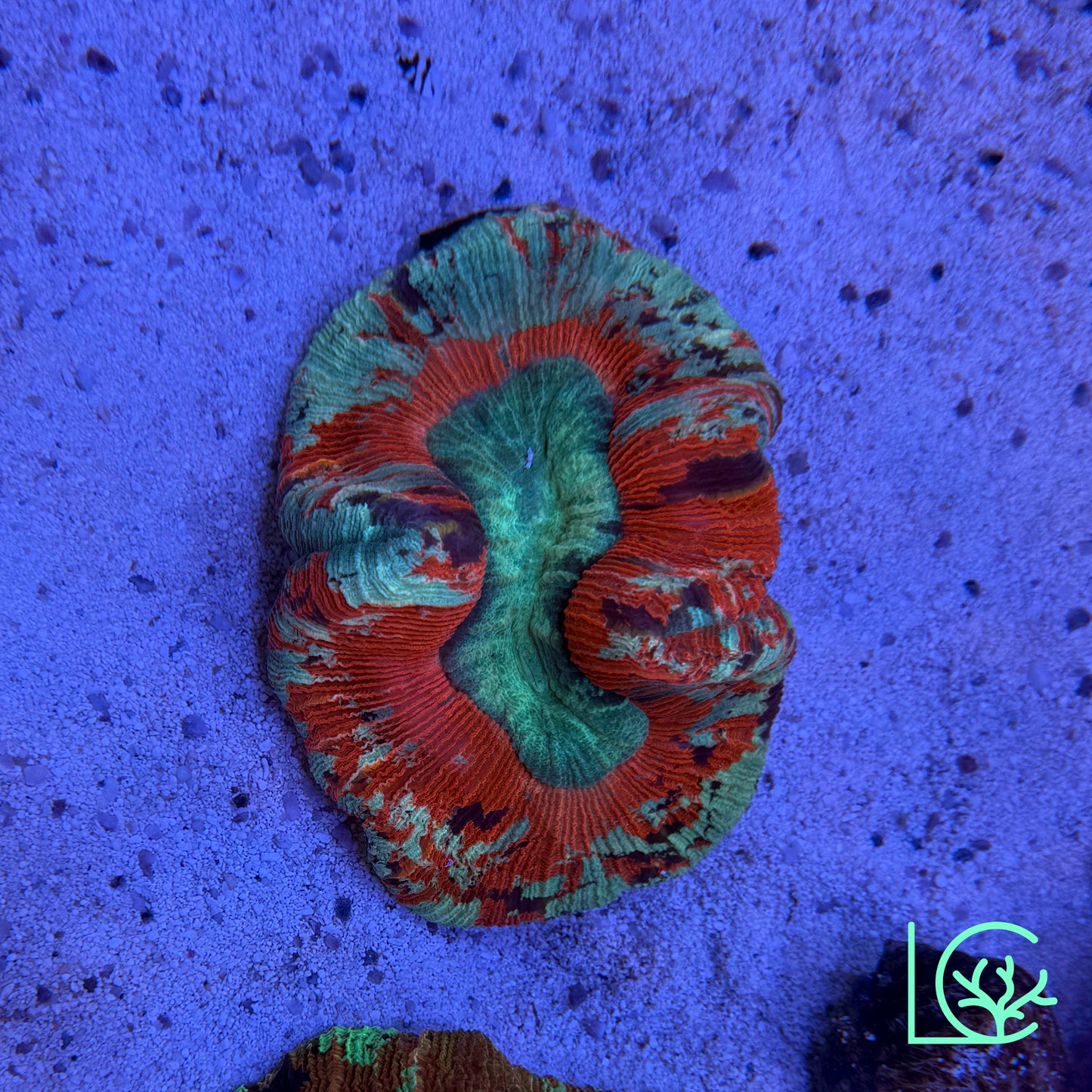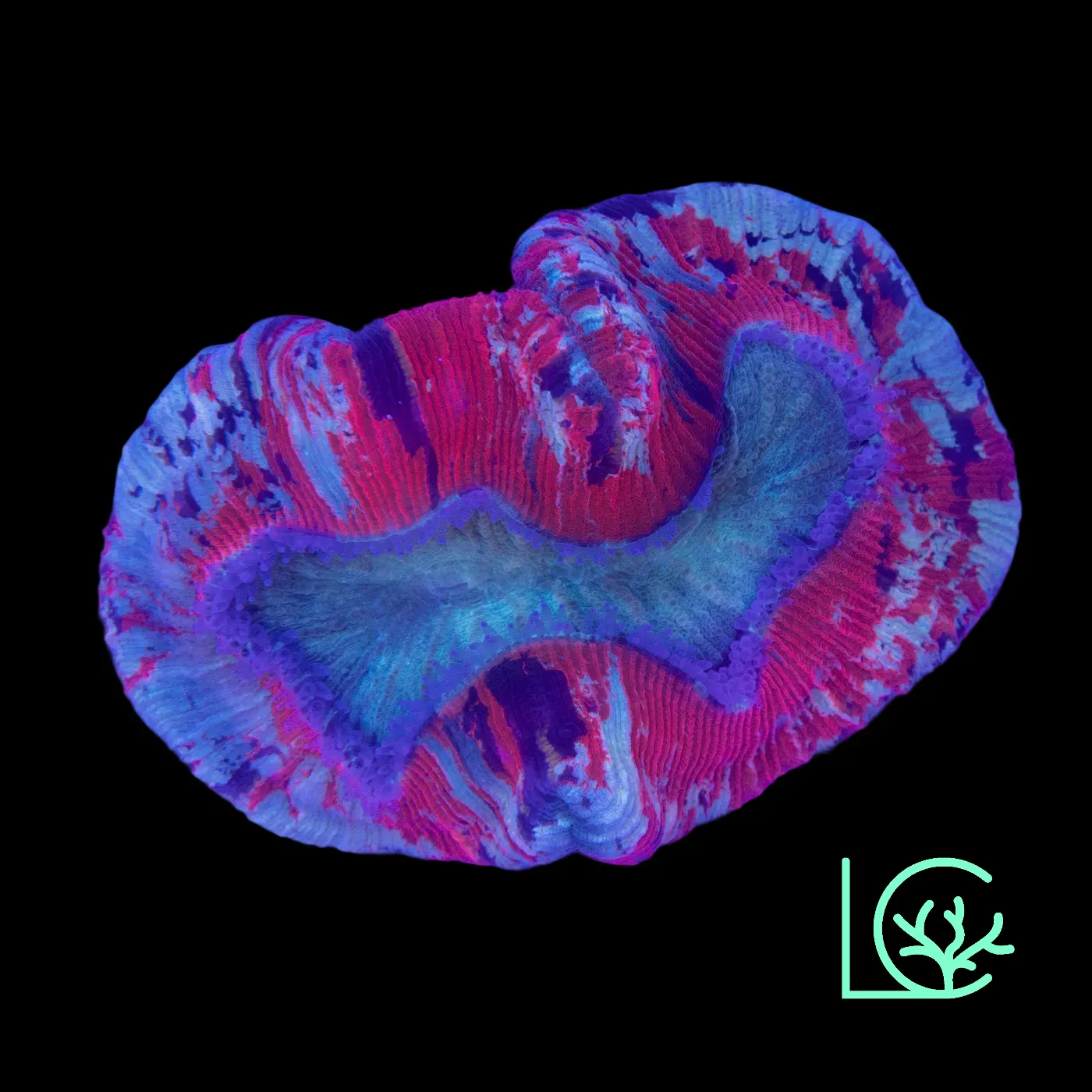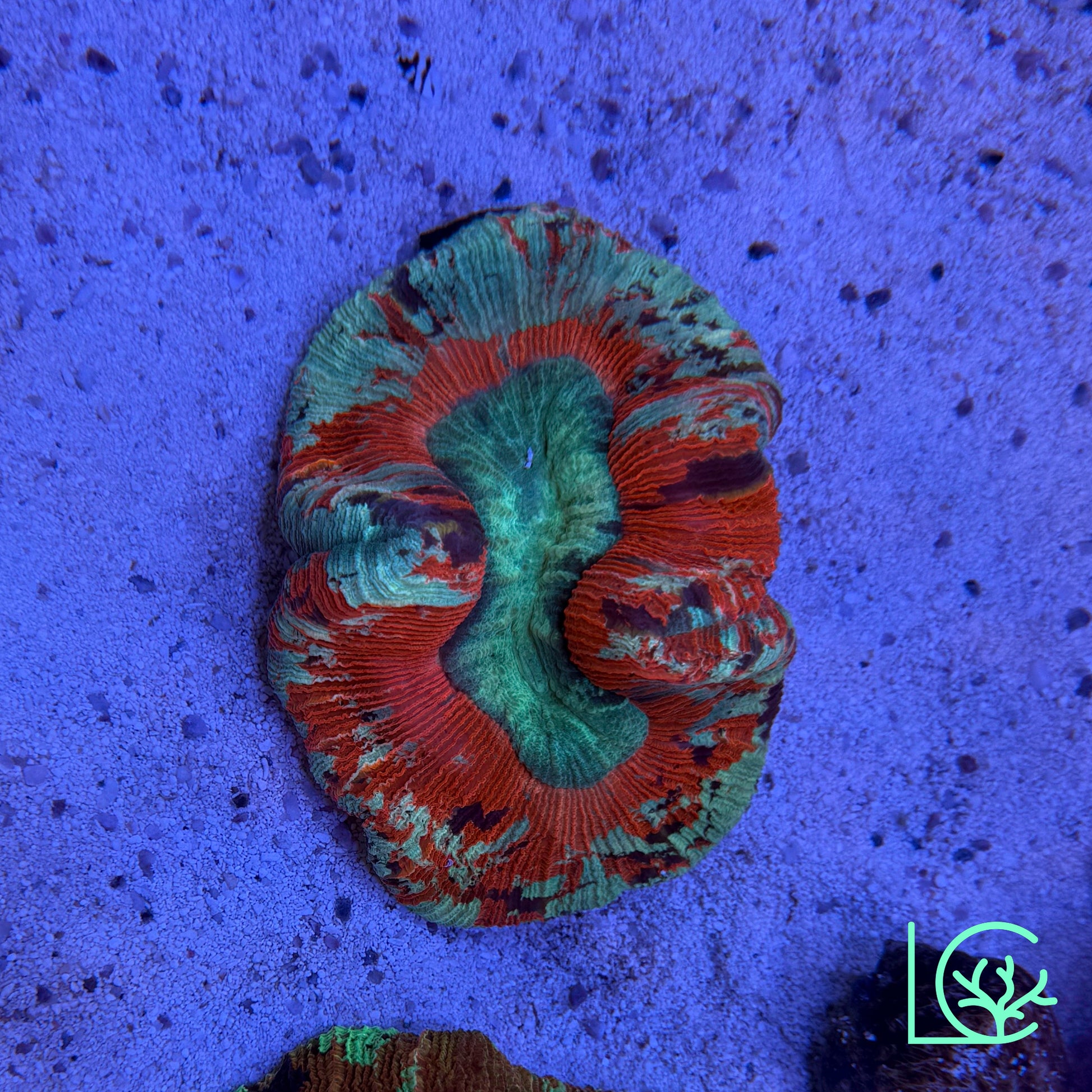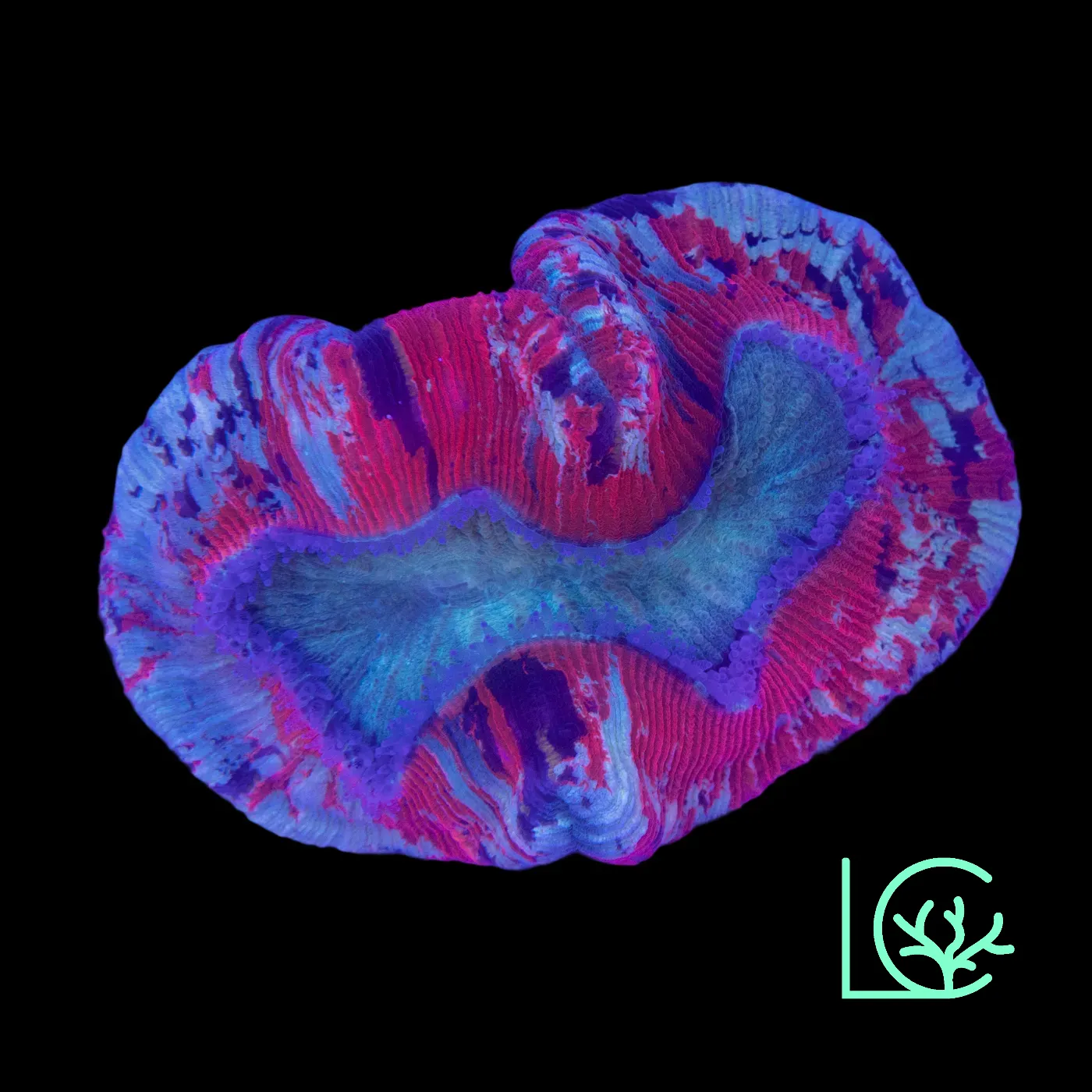- Description
- Reviews
Lush Corals presents the Pixie Trachy WYSIWYG
This WYSIWYG frag is in excellent health and has gone through our two stage in-house quarantine process to ensure our customers receive heathy and pest free coral.
ABOUT TRACHY CORAL
Trachyphyllia corals, commonly known as Trachy Corals, are large polyp stony (LPS) corals known for their vibrant colors and distinctive, ridged, brain-like structure. They come in a variety of hues, including red, green, and purple, and often feature striking patterns. Trachy corals are relatively hardy and easy to care for, thriving in moderate light and flow. Their slow growth and impressive appearance make them an attractive addition to reef aquariums.
Lighting Requirements for Trachyphyllia Coral
Trachy corals prefer moderate lighting. They can tolerate a range of light intensities but thrive in indirect, lower to moderate light conditions.
-
Ideal PAR Range:
50–150 PAR -
50–100 PAR: Ideal for maintaining vibrant colors and healthy growth.
-
100–150 PAR: Can be tolerated, but higher light levels should be introduced gradually to avoid stress or bleaching.
-
Spectrum:
-
A blue-dominant spectrum (420–470nm) is ideal for enhancing the coral’s color.
-
Full-spectrum lighting is also effective for promoting healthy growth and balanced light exposure.
-
Lighting Type:
-
Trachy corals do well under LED, T5HO, or metal halide lighting, as long as the light intensity remains moderate.
-
Placement Tips:
-
Place them in lower to mid-tank areas where light intensity is more controlled and indirect.
Water Flow Requirements for Trachyphyllia Coral
Trachy corals prefer gentle to moderate water flow. They thrive in a steady, soft current that allows their polyps to extend comfortably.
-
Flow Type:
-
Gentle to moderate, indirect flow is ideal.
-
A gentle current promotes healthy polyp extension without stressing the coral. Avoid strong or direct flow, as it can cause the coral to retract and potentially harm the tissue.
-
Why It Matters:
Proper flow ensures nutrient exchange and keeps the coral’s surface clean, while too much flow can cause tissue damage and stress. -
Placement Tips:
-
Position the coral in areas of the tank with low to moderate flow to support its delicate structure and allow for proper extension.
No additional information available.





